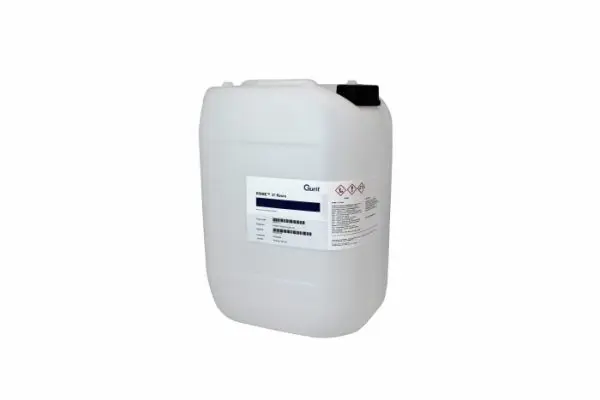Product information
EPOXY PRIME 37 H+K STANDARD 4 KG
PRIME™ 37 infusion resin is designed for the production of large and complex composite parts. Typical applications include masts, boat hulls, and structural reinforcements. Prime 37 wets out the fibre in a unique way, accelerating the infusion process and improving the quality of the final product. The resin contains bio-based raw materials as standard, making it a more environmentally friendly option.
Benefits
- Good mechanical properties
- Low viscosity
- Low exothermic reaction
- Lloyd's and DNV approvals
Properties
Property | Resin: | STD hardener | Mixed |
Mix ratio by weight | 100 | 29 | - |
Mix ratio by volume | 100 | 34 | - |
Density g/cm³ | 1,13 | 0,95-1,10 | 1,11 |
Viscosity at 25 °C, cP | 415-515 | 100-150 | 345 |
Pot life at 25 °C, min | - | - | 53 |
Handling
Prime 37 is an infusion epoxy resin specifically suited for vacuum infusion processes. The product is used to impregnate dry fibre reinforcements (e.g. glass, carbon, or aramid fibres) using vacuum assistance.
Before use, ensure that the working area is clean and well-ventilated. Protect skin and eyes with appropriate personal protective equipment. Use only compatible hardeners (Ampreg 3x hardeners) and follow the exact mix ratio (by weight 100:29).
Mix the resin and hardener thoroughly until the mixture is completely homogeneous. Avoid the formation of air bubbles. If necessary, the mixture can be degassed under vacuum before infusion.
Place the dry fibres and necessary vacuum materials into the mould. Test the system for leaks before introducing the resin. If the bag leaks, excess air will enter the laminate. For more detailed instructions on the infusion process, see here..
Once the vacuum bag integrity has been confirmed, resin infusion can begin. Monitor the resin flow and ensure that all fibres are evenly wetted out. Once the desired amount of resin has been infused, close the resin-side lines and leave the laminate under vacuum at room temperature for 12–24 hours.
After curing, the part can be demoulded. To achieve full mechanical strength, post-curing is recommended at 50–80 °C for several hours, depending on the selected hardener.
Safety
Before handling epoxy, ALWAYS ensure good ventilation and proper skin protection. Wear a long-sleeved shirt and disposable gloves resistant to epoxy (e.g. nitrile rubber). Uncured epoxy resin is a strong skin sensitiser. A suitable respirator for epoxy work should be certified according to EN405. Fully cured epoxy is not hazardous to health.
Tools can be cleaned with acetone, but keep in mind that epoxy is a very strong adhesive and sticks to almost anything – including your tools. Therefore, use inexpensive tools that can be discarded after use.
Store the resin in a cool, dry place, tightly sealed. Avoid direct sunlight and high temperatures. Always follow the manufacturer’s safety and handling instructions.
Resin:
H315 – Causes skin irritation, H317 – May cause an allergic skin reaction, H318 – Causes serious eye damage, H411 – Toxic to aquatic life with long lasting effects
Hardener:
H314 – Causes severe skin burns and eye damage, H317 – May cause an allergic skin reaction, H412 – Harmful to aquatic life with long lasting effects.
Tekninen esite:
